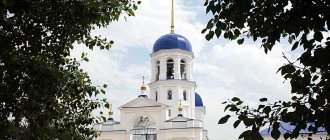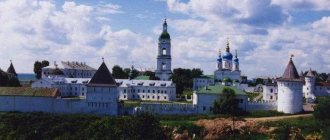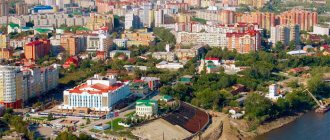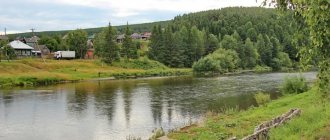For the river in Russia, see Borzya (river).
City in Zabaykalsky Krai, Russia
| Borzya Borzya | |
| Town[1] | |
| Borzya station | |
| Flag Coat of arms | |
| Location of Borzya | |
| Borzya Location of Borzya Show map of Russia Borzya Borzya (Trans-Baikal Territory) Show map of Zabaykalsky Krai | |
| Coordinates: 50°23′N 116°31'E / 50.383°N Latitude 116.517°E / 50.383; 116.517Coordinates: 50°23′N 116°31'E / 50.383°N Latitude 116.517°E / 50.383; 116.517 | |
| A country | Russia |
| Federal subject | Transbaikal region[1] |
| Administrative region | Borzinsky district[1] |
| Based | 18th century |
| City status from | 1950 |
| Height | 690 m (2260 ft) |
| population (2010 Census)[2] | |
| • General | 31,379 |
| • Evaluate (2018)[3] | 28,888 (-7.9%) |
| Administrative status | |
| • Capital from | Borzinsky district[1] |
| Municipal status | |
| • Municipal district | Borzinsky municipal district[4] |
| • Urban village | Borzinskoye urban settlement[4] |
| • Capital from | Borzinsky municipal district[5], urban-type settlement Borzinskoe[6] |
| Timezone | UTC + 9 (MSK + 6 [7]) |
| Postal code(s)[8] | 674600–674603, 674609 |
| Dial code(s) | +7 30233 |
| OKTMO I WOULD | 76609101001 |
Borzya
(Russian: Borzya, IPA: [ˈBorzʲə]; Buryat: Boorzho,
Boorjo
; Mongolian: Boorzh,
Boorj
) is a town and the administrative center of Borzinsky District in Zabaykalsky Krai, Russia, located 349 kilometers (217 mi) southeast of Chita, administrative center of the region. Population: 31,379 (2010 Census);[2]31,460 (2002 Census);[9]36,373 (1989 Census).[10]
Geography
The city is located on the banks of the Borzya River—a right tributary of the Onon—approximately 40 km (25 mi) from the border with Mongolia in the south and 70 km (43 mi) from the border with China in the southeast.
Climate
Borzya has a humid continental climate (Köppen climate classification Dwb
) bordering on a subarctic climate (Köppen climate classification
Dwc
) and a semi-arid climate (Köppen climate classification
BSk
), with severely cold winters and warm summers. Precipitation is quite low, but from June to September it is slightly higher than at other times of the year.
| Climate data for Borzya | |||||||||||||
| Month | Jan | Feb | Mar | Apr | May | Jun | Jul | Aug | Sep | October | But I | December | Year |
| Record high °C (°F) | 0 (32) | 7.1 (44.8) | 18.1 (64.6) | 30.1 (86.2) | 37.2 (99.0) | 41.4 (106.5) | 40.3 (104.5) | 37.6 (99.7) | 34.4 (93.9) | 25.8 (78.4) | 12.4 (54.3) | 4.4 (39.9) | 41.4 (106.5) |
| Average high °C (°F) | −18.3 (−0.9) | −12.1 (10.2) | −2.3 (27.9) | 9.2 (48.6) | 18.0 (64.4) | 24.1 (75.4) | 25.7 (78.3) | 23.6 (74.5) | 16.8 (62.2) | 7.2 (45.0) | −6.1 (21.0) | −15.7 (3.7) | 5.8 (42.5) |
| Daily average °C (°F) | −26.3 (−15.3) | −21.3 (−6.3) | −10.4 (13.3) | 1.7 (35.1) | 10.1 (50.2) | 16.9 (62.4) | 19.2 (66.6) | 16.9 (62.4) | 9.4 (48.9) | −.2 (31.6) | −13.4 (7.9) | −23.1 (−9.6) | −1.7 (28.9) |
| Average low °C (°F) | −32.8 (−27.0) | −29.3 (−20.7) | −18.6 (−1.5) | −5.7 (21.7) | 1.7 (35.1) | 9.2 (48.6) | 12.8 (55.0) | 10.4 (50.7) | 2.5 (36.5) | −6.7 (19.9) | −19.7 (−3.5) | −29.4 (−20.9) | −8.8 (16.2) |
| Record low °C (°F) | −50 (−58) | −49.0 (−56.2) | −43.6 (−46.5) | −30.8 (−23.4) | −12.3 (9.9) | −4.5 (23.9) | 1.2 (34.2) | −2.8 (27.0) | −13.8 (7.2) | −29.1 (−20.4) | −43.1 (−45.6) | −51.7 (−61.1) | −51.7 (−61.1) |
| Average precipitation mm (inches) | 3 (0.1) | 2 (0.1) | 4 (0.2) | 12 (0.5) | 17 (0.7) | 52 (2.0) | 84 (3.3) | 67 (2.6) | 33 (1.3) | 10 (0.4) | 5 (0.2) | 5 (0.2) | 294 (11.6) |
| Average relative humidity (%) | 79.3 | 77.5 | 69.4 | 52.5 | 47.6 | 54.3 | 63.7 | 63.4 | 60.7 | 61.0 | 75.4 | 80.3 | 65.4 |
| Average monthly sunshine | 169.0 | 204.4 | 266.6 | 265.5 | 294.5 | 309.0 | 293.0 | 286.8 | 241.5 | 224.8 | 168.0 | 148.8 | 2,871.9 |
| Source 1: Temps & Precip: pogodaiklimat.ru [11] | |||||||||||||
| Source 2: Other data: climbase.ru (1948-2011)[12] | |||||||||||||
Borzya // “Historical Encyclopedia of Siberia” (2009)
BORZYA , a city in the Trans-Baikal Territory, the administrative center of the district of the same name, is located in the foothills of the Nerchinsky Range, 386 km southeast of Chita.
Babiye Lake is located 14 km southwest of Borzya, and Borzya Salt Lake is 24 km away. Since the 1770s - a guard settlement of the Tunguska Cossacks, from 1891 - a village, in 1924-26 - a district center, from 1950 - a city, from 1972 - a city of regional subordination, the administrative center of the Borzinsky district. Railroad station. The Ulan-Ude-Chita-Zabaikalsk highway goes to the border with China, in the direction Borzya-Solovyovsk - to the border with Mongolia. Population (thousand people): 1907 - 1.2; 1924 - 2.9; 1959 - 23.7; 1970 - 27.8; 1989 - 36.3; 1998 -31.9; 2002 - 31.5; 2007 - 30.6.
In the early 1770s. a settlement was founded near the Buryat camp near the town of Bukha as a guard picket of the Tungus Cossacks. In 1891, a settlement of 4 wooden houses and 46 Buryat yurts was formed, where 226 people lived. After the completion of the construction of the Trans-Baikal Railway, railway workshops and a turnaround depot operated at the station. Since the 1900s Borzya became a merchant center. Since 1911, it hosted annual fairs for the sale of leather, wool, and meat, there were about 30 trading shops, and a slaughterhouse. The government postal and telegraph office was also located in Borza. Since the 1970s In the city there is an elevator with a feed mill, an animal farm, food enterprises (a bakery with a confectionery shop, a meat processing plant, a creamery, a brewery) industry, 5 construction and 10 industrial organizations, 8 railway and 1 automobile repair enterprise and others. The modern economy of the city is represented by the following enterprises: Borzinsky elevator, Durbachi, peasant farm enterprise Otsolui; "Borzyavtotrans", Borzinsky forestry enterprise.
At the beginning of the 20th century. There was a church in Borza, and there were 2 schools (private and railway). In the 1950s - 7 schools, 3 kindergartens, clubs, 2 hospitals. In modern Borzya there are 9 secondary schools, colleges, 14 kindergartens, a sports and music school, a children's art school, 2 clubs, a local history museum, 2 houses of culture, 12 libraries, 12 gyms, a stadium, a cinema, 2 hospitals and a hospital, a boarding house for the elderly and disabled, an auxiliary boarding school, an information center and more. The newspaper “Daurskaya Nov” is published.
The first coat of arms was approved in 1988: in a silver shield there is a brown overturned fork-shaped cross, burdened with a circular composition of a silver stripe with the image of an ear of corn, a silver ram and the blades of a rotary excavator. The white stripe indicates salt exported from the Borzin steppe. The cross symbolizes the city's location at the crossroads of international routes from the USSR to Mongolia and China.
The modern coat of arms was approved in 2000: in a field divided into azure, green and black colors, a standing silver crane is depicted with raised wings, golden paws and an upraised golden open beak. The fork-shaped division of the field indicates the transport communications of the region connecting Russia with China and Mongolia. The crane and green color reflect the nature of the area and the Daursky Nature Reserve. The azure color symbolizes the Borzya River and lakes. Black color - mining.
Lit.: All Russia. Cities and towns: Encyclopedia. M., 2001; Encyclopedia of Transbaikalia: Chita region. Novosibirsk, 2003. T. 2.
Story
Although human settlements have existed on the current site of the city since the 18th century, construction of the modern city began with the construction of the Trans-Siberian Railway in 1899. The village near the Borzya station was officially opened in 1900. Suvorovsky
in honor of Alexander Suvorov.[13] This name, however, did not become widespread among residents, who continued to use the same name as the railway station and river. The name Borzya became official when the village was granted city status in 1950.[13]
Map
| Borzya: cards |
Borzya: photo from space (Google Maps) Borzya: photo from space (Microsoft Virtual Earth)
| Borzya. Nearest cities. Distances in km. on the map (in brackets along roads) + direction. Using the hyperlink in the distance , you can get the route (information courtesy of the AutoTransInfo website) | |||
| 1 | Sherlova Gora | 21 (30) | NW |
| 2 | Art. Clear | 71 () | NW |
| 3 | Yasnogorsk | 81 () | NW |
| 4 | Tin | 91 (122) | NW |
| 5 | Zabaikalsk | 98 (117) | SE |
| 6 | Nizhny Tsasuchey | 101 (134) | Z |
| 7 | Krasnokamensk | 111 (215) | IN |
| 8 | Alexandrovsky Plant | 114 (127) | NE |
| 9 | Balei | 133 (195) | WITH |
| 10 | Mogoituy | 151 (182) | NW |
| 11 | Pervomaisky | 155 (226) | NW |
| 12 | Shelopugino | 157 (268) | NE |
| 13 | Aginskoe | 162 (216) | NW |
| 14 | Shilka | 166 (258) | WITH |
a brief description of
Located in Transbaikalia, in the foothills of the Nerchinsky Range, on the river. Borzya (Amur basin), 349 km southeast of Chita. Railway junction lines and highways.
Near Borzi is the Daursky Nature Reserve.
Territory (sq. km): 187
Information about the city of Borzya on the Russian Wikipedia site
Historical sketch
It emerged in 1899 as a village for railway builders and Borzya station. Name by river Borzya, the left tributary of the Argun.
In 1900, the village was given the name Suvorovsky in memory of the Russian commander Generalissimo A.V. Suvorov (1729-1800), but it did not take root, and the village retained the name of the station.
Since 1939, the working village of Borzya. Since 1950 the city.
Economy
Railway enterprises transport, meat processing plant, butter factory.
Center of the livestock district.
Main enterprises
COAL MINING
OJSC "Razrez 'Kharanorsky'"
674612, Trans-Baikal Territory, Borzinsky district, urban settlement Sherlovaya Gora,
Offers:
brown coal
MEAT INDUSTRY
OJSC "Borzinsky Meat Processing Plant"
674610, Trans-Baikal Territory, Borzinsky district, Borzya, st.
Promyshlennaya, 6 Offers:
Meat, sausages, semi-finished products
| Population by year (thousands of inhabitants) | |||||||
| 1939 | 10.3 | 1996 | 32.4 | 2007 | 30.6 | 2015 | 29.4 |
| 1959 | 23.7 | 1998 | 31.9 | 2008 | 30.4 | 2016 | 29.1 |
| 1967 | 26 | 2000 | 31.1 | 2010 | 30.3 | 2017 | 28.9 |
| 1970 | 27.8 | 2001 | 31.0 | 2011 | 31.4 | 2018 | 28.9 |
| 1979 | 35.8 | 2003 | 31.5 | 2012 | 30.8 | 2019 | 29.2 |
| 1989 | 36.4 | 2005 | 31.1 | 2013 | 30.3 | 2020 | 29.2 |
| 1992 | 36.7 | 2006 | 30.7 | 2014 | 29.8 | 2021 | 29.4 |
Economy
In addition to the railroad workshops, employers in the city include food manufacturing plants, particularly meat production from the livestock industry in the surrounding area.
The Kharanor brown coal quarry mine is located northwest of the city and provides fuel for electricity generation.
Transport
The city is on the original section of the Trans-Siberian Railway which crossed Manchuria on the way to Vladivostok and was known as the Chinese Eastern Railway. This route was later bypassed by the current Trans-Siberian Railway, which is entirely within Russian territory, but the original line passing through Borzya is still used for passenger and freight traffic to and from China.
Recommendations
Notes
- ^ a b c d f Register of administrative-territorial units and settlements of the Trans-Baikal Territory
- ^ a b
Federal State Statistics Service of Russia (2011).
“All-Russian Population Census 2010. Volume 1" [All-Russian Population Census 2010, vol. 1]. All-Russian Population Census 2010 [All-Russian Population Census 2010]
(in Russian). Federal State Statistics Service. - "26. The size of the permanent population of the Russian Federation by municipalities as of January 1, 2022.” Federal State Statistics Service. Retrieved January 23, 2022.
- ^ a b c
Law No. 317-ZZK - Law No. 316-ZZK
- Federal State Statistics Service. Federal Agency for Technological Regulation and Metrology. No. OK 033-2013 January 1, 2014 “All-Russian classifier of municipal territories. Code 76 609 101.” (Federal State Statistics Service. Federal Agency for Technological Regulation and Metrology. No. OK 033-2013 January 1, 2014. Russian classification of municipal territories. Code 76 609 101.
). - "On the calculation of time." Official Internet portal of legal information
(in Russian). June 3, 2011. Retrieved January 19, 2022. - Post office. Information and computing center of OASU RPO. ( Post office
).
Search for postal facilities ( Search for postal facilities
) (in Russian) - Federal State Statistics Service of Russia (May 21, 2004). “The population of Russia, the constituent entities of the Russian Federation as part of federal districts, urban settlements, urban settlements, settlements, settlements of 3 thousand or more people.” [Population of Russia, its federal districts, federal subjects, districts, urban settlements, rural settlements - administrative centers, rural settlements with a population of more than 3000 people] (XLS). All-Russian Population Census of 2002 [All-Russian Population Census of 2002]
(in Russian). - “All-Union Population Census of 1989. The actual population of the union and autonomous republics, autonomous regions and districts, territories, regions, urban settlements and villages. Borzya (Trans-Baikal Territory)
- The headquarters of the 36th Army of the Siberian Military District was moved from Borzya to Ulan-Ude [The headquarters of the 36th Army of the Siberian Military District was transferred from Borzya to Ulan-Ude]. Sibinfo
(in Russian). February 24, 2009. Retrieved October 13, 2016.
Borzya
(Transbaikal region)
OKATO code:
76209501
Founded:
1899
Urban settlement since:
1939
City since:
1950 City of district subordination (Borzinsky district of the Trans-Baikal Territory)
Center:
Borzinsky district
Telephone code (reference phone)
| 30233***** | — |
Deviation from Moscow time, hours:
6
Geographical latitude:
50°23′
Geographical longitude:
116°32′
Altitude above sea level, meters:
690 Sunrise and sunset times in the city of Borzya









